In 2023, key players in the cloud industry, such as Google, Microsoft, Adobe, and Salesforce, are making significant strides. The SaaS, PaaS, and IaaS cloud delivery models have become integral to the IT sector, and their influence is only gaining momentum. Moreover, the COVID-19 pandemic has underscored the critical role of remote work in a company’s resilience and profitability.
Consequently, there’s been a substantial uptick in the adoption of SaaS solutions due to their cost-effectiveness. Given this context, it is prudent to ride the wave of SaaS business today rather than lament missed opportunities in the future.
What Constitutes a SaaS Platform?
A SaaS platform distinguishes itself from traditional software by being accessible via the Internet through a subscription model, rather than being installed directly on users’ servers or devices. The responsibility for upgrades, maintenance, and management lies entirely with the owner of the SaaS service.
When it comes to the advantages of cloud technology:
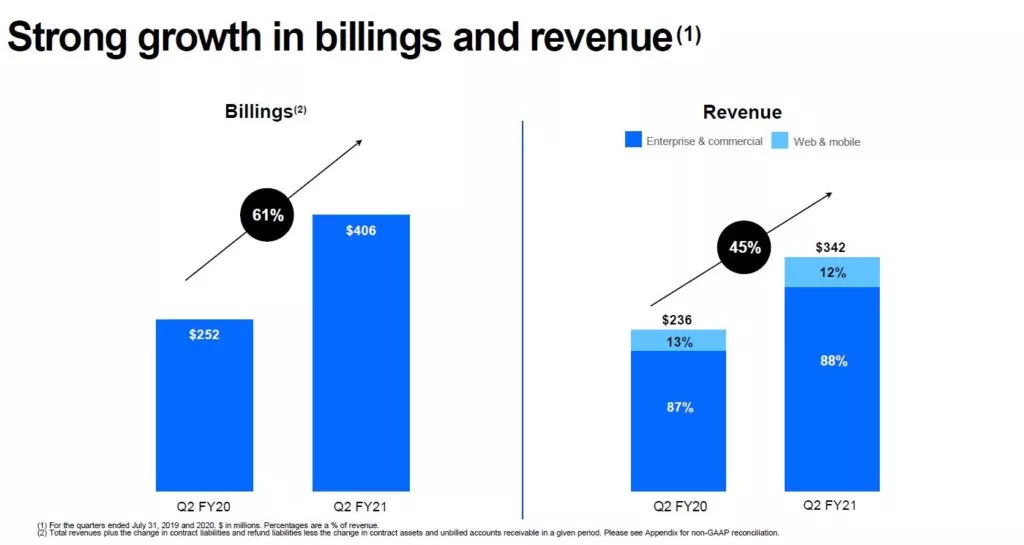
- Scalability: Cloud platforms empower organizations to flexibly adjust their resources to meet demand. This means you can effortlessly expand or scale down your infrastructure as needed, without hefty upfront investments.
- Cost-Effectiveness: Cloud solutions eliminate the necessity for on-premises hardware, software licenses, and infrastructure upkeep. Instead, you pay for cloud services on a pay-as-you-go basis, curbing capital expenditures and enhancing cost control.
- Accessibility and Flexibility: Cloud solutions grant users access to applications, data, and services from anywhere with an internet connection. This flexibility facilitates remote work, collaboration, and bolsters business continuity by ensuring data availability even during local disruptions.
- Reliability and Resilience: Cloud providers typically offer high levels of reliability, incorporating redundancies and disaster recovery capabilities. This ensures the consistent availability of data and applications, reducing downtime risk and strengthening overall business continuity.
- Security: Cloud providers invest heavily in security, employing robust protocols, encryption, and access controls to safeguard sensitive information. Centralized data storage simplifies security policy implementation and access monitoring.
- Collaboration and Integration: Cloud-based solutions offer seamless collaboration and integration capabilities. Multiple users can collaborate on the same project in real-time, and cloud platforms frequently provide APIs and integration options for smooth interfacing with other software and services.
- Automatic Updates and Maintenance: Cloud providers manage software updates, maintenance, and infrastructure, freeing up IT resources and ensuring users always have access to the latest features and security enhancements.
- Data Analytics and Insights: Cloud solutions often feature built-in analytics and reporting tools, enabling businesses to collect, analyze, and derive insights from their data, leading to improved decision-making and enhanced business intelligence.

1. Micro-SaaS
Micro-SaaS, an emerging trend, offers users the opportunity to save both time and money by creating smaller, more affordable, and easily scalable versions of existing SaaS products. Rather than embarking on lengthy product development cycles, it’s essential to reimagine the concept of micro-SaaS.
The value of micro-SaaS lies in its capacity to address specific niches or problems with focused solutions. These businesses offer tailored features at a reasonable price, making them stand out as an excellent idea for startups in a competitive market.
An example of a successful micro-SaaS venture is Linkody, specializing in backlink tracking to help users find and build links to their websites. Linkody provides insightful metrics on a site’s backlink profile and its potential impact on Google’s ranking factors. Since its establishment in 2011, Linkody has generated $150K in revenue, illustrating the potential of micro-SaaS endeavors.
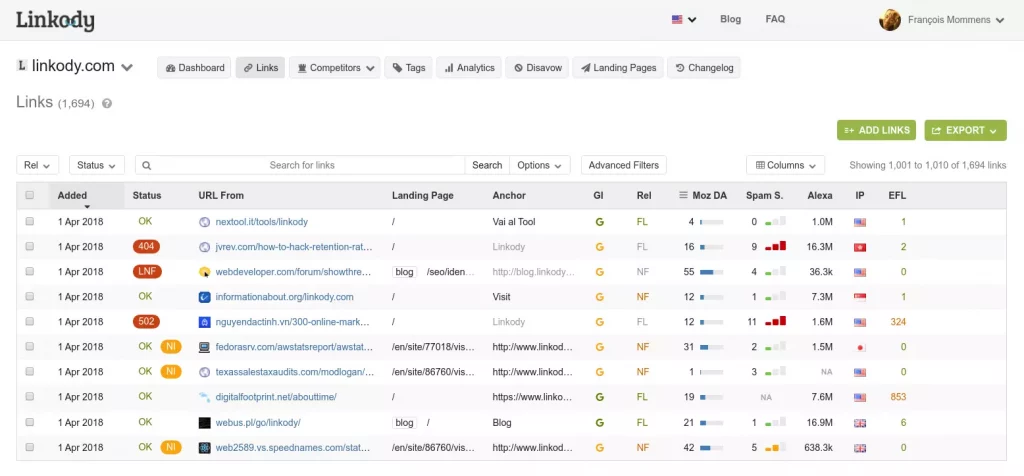
2. Cryptocurrency Exchange
In today’s digital landscape, the cryptocurrency sector is thriving, leading to a growing demand for cryptocurrency exchanges. This presents a prime opportunity for developing a SaaS crypto exchange platform, facilitating virtual currency trading.
The value of crypto exchanges lies in their role as platforms where users can buy, trade, and convert cryptocurrencies, crucial for the widespread trading of virtual currencies.
A notable example is Binance, founded in 2017, with the trust of 120 million traders worldwide and a total transaction value of an impressive $76 billion. Binance generates revenue through annual fees and trading commissions, contributing to its financial success and sustainability.
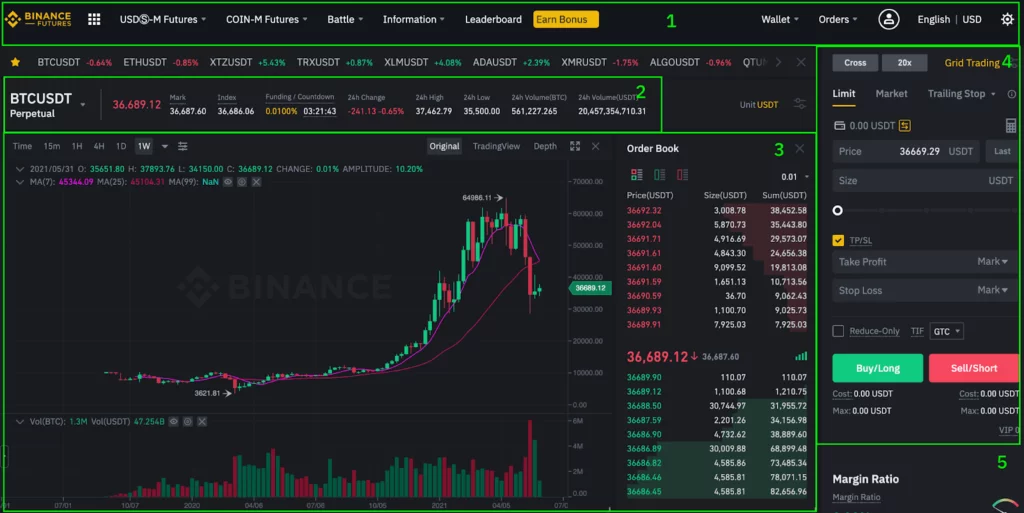
3. NFTs
The recent surge in NFTs (Non-Fungible Tokens), some selling for millions of dollars, has created a promising opportunity to build an NFT marketplace platform as a top SaaS product idea in 2023. NFTs represent unique digital items like artwork, photographs, videos, and music.
Developing an NFT SaaS marketplace holds value in supporting artists and showcasing their work to a broader audience, while fostering innovative technological solutions. Therefore, creating an NFT marketplace can be a highly profitable SaaS venture.
A prime example is OpenSea, the world’s largest NFT platform in terms of the total value of digital assets. It attracts over 120 million monthly users and secured $300 million in venture capital in January 2022, valuing the platform at over $13 billion.

4. Investing Tools
Post-pandemic, the importance of investing to safeguard one’s finances against inflation has grown significantly. There’s a lucrative domain for implementing profitable SaaS ideas in 2023, particularly in investing.
The value of SaaS investment tools lies in aiding users in predicting growth rates, risk-free rates, dividends, and analyzing past trades, thus making informed investment decisions more accessible. Platforms like Investing.com offer real-time data, charts, and analytics, empowering investors with comprehensive tools and resources.
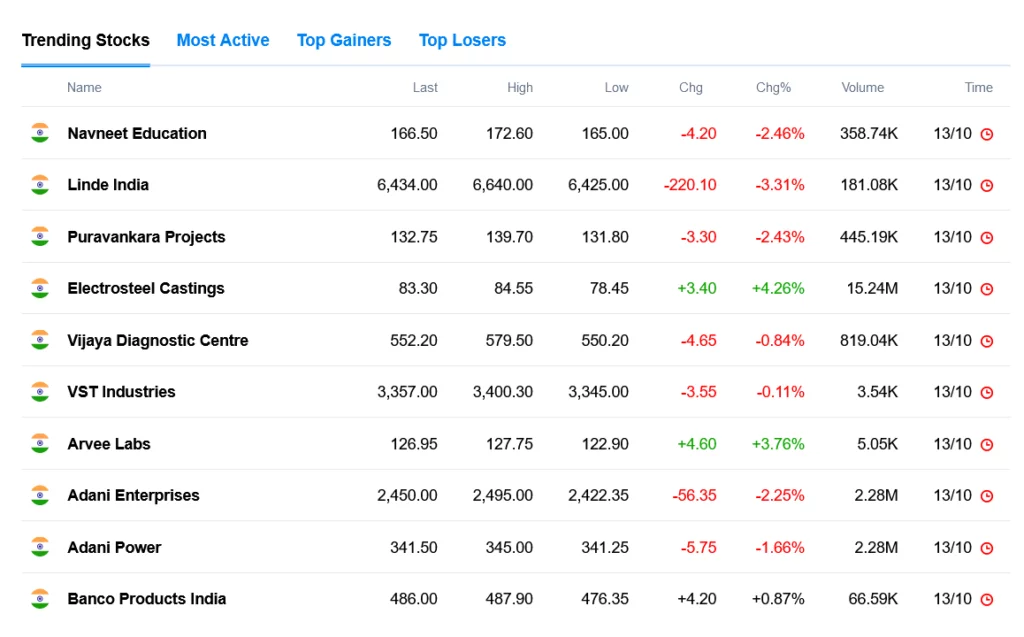
5. Social Media Management
In 2022, people spent an average of 2 hours and 28 minutes per day on social media, creating a significant opportunity for SaaS businesses. The field of social media management offers profitable SaaS product ideas for 2023.
Social media management software streamlines workflows by consolidating multiple social media platforms. Platforms like ContentCal, a B2B SaaS content marketing platform, provide valuable solutions for scheduling, automation, and analytics. ContentCal’s success story showcases the potential for SaaS platforms that simplify and optimize social media management processes.

6. Video Rendering and Editing
In the contemporary digital marketing landscape, the demand for video content has seen an unprecedented surge, driving organic traffic growth by 157%. This underscores the vital role that real-time video rendering and editing play in enhancing online presence for businesses. Despite not yet being saturated, the realm of video rendering technology offers lucrative opportunities for SaaS startups.
The market in this domain is presently dominated by major companies like Adobe, Nvidia, Autodesk, and others. Their professional-grade software applications come with high costs and relatively inflexible pricing models, primarily targeting professionals.
The value of video rendering and editing SaaS solutions lies in simplifying the computationally intensive process of real-time video rendering for non-professionals. A notable example of a successful SaaS startup in this space is VEED. VEED specializes in user-friendly video editing and has achieved an annual recurring revenue of $7 million, catering to a broad audience of over one million users.
VEED’s success story underscores the immense potential of SaaS ventures focused on making video editing and rendering accessible to non-professionals.
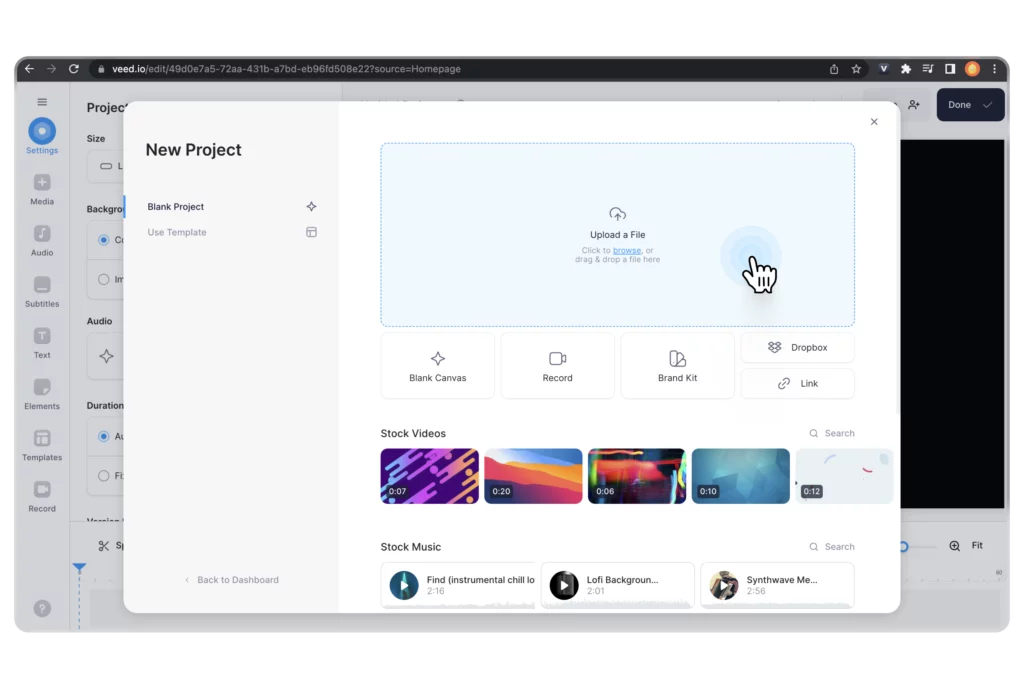
7. Appointment Management
Efficiently managing appointments is essential in the realm of business operations. The market for appointment scheduling software is projected to reach $424.4 million by 2027, with SaaS solutions continuing to dominate and welcome new startup ideas.
Appointment management software’s value lies in streamlining customer and staff scheduling, as well as calendar management, enhancing workflow, flexibility, and efficiency. A prime example in this field is Calendly, a widely used SaaS solution for appointment management, connecting over 1 million individuals. Calendly’s success story includes generating nearly $85 million in user subscription revenue in 2022, showcasing the potential of SaaS ventures in this domain.
Calendly simplifies scheduling and improves productivity, underscoring the importance of efficient appointment management.
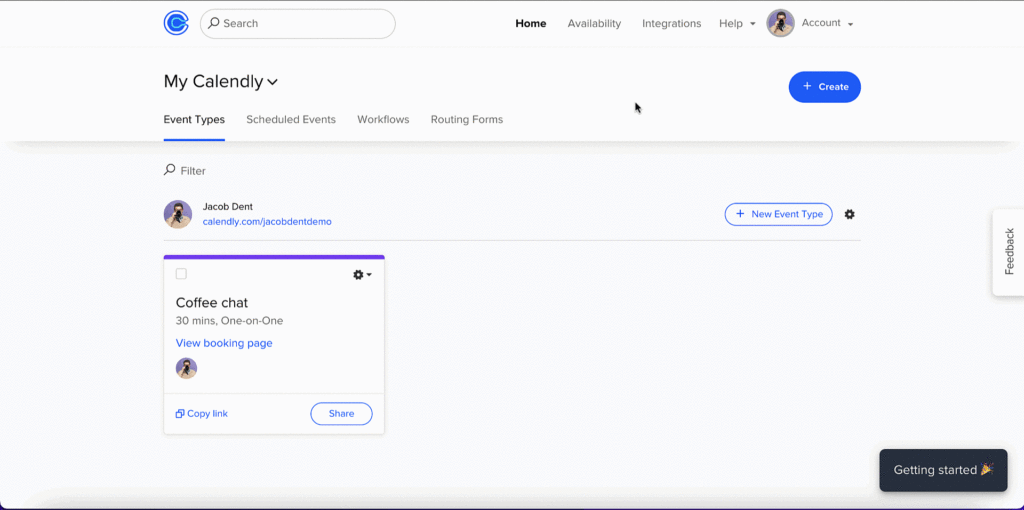
8. Content Planning
Content marketing is on the rise, with 42% of companies actively investing in it. This growing demand for content marketing presents opportunities for SaaS product ideas in the field of content planning.
Content planning platforms streamline the process of creating, planning, producing, and analyzing content. Notable in this space is CoSchedule, a SaaS-based platform dedicated to content planning, organization, and tracking. CoSchedule was featured in the Gartner Magic Quadrant as one of the top content marketing platforms in 2022, highlighting its success as a SaaS startup.
The success of CoSchedule and similar platforms emphasizes the significance of content planning in the modern digital landscape, providing comprehensive tools to optimize content strategies and enhance engagement with target audiences.
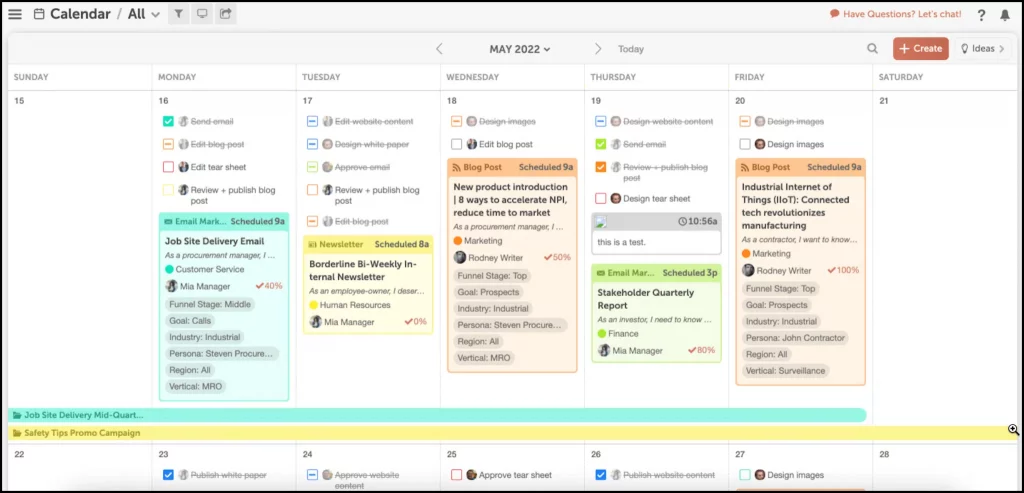
8. Virtual Assistant
AI-powered virtual assistants are poised to grow in usage and present opportunities for SaaS applications. These virtual assistants can engage with customers, offering significant value in improving customer experiences and reducing costs. One example is Conversica, a SaaS provider specializing in AI virtual assistants for capturing, scoring, and managing leads. Conversica has raised $132 million in total funding, illustrating the potential of this SaaS application idea.
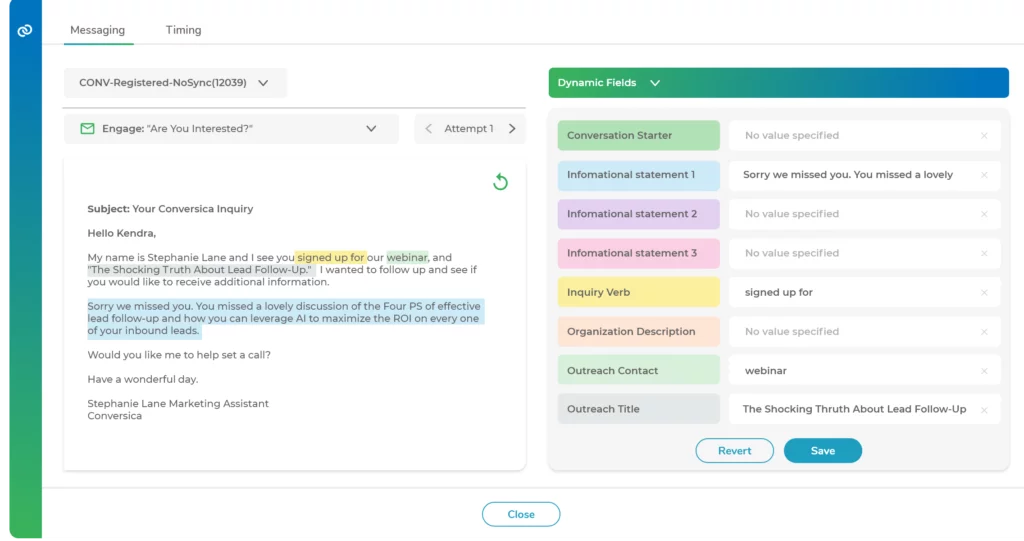
9. Chatbots
Chatbots are essential for automating customer support and enhancing customer experiences. With the growing emphasis on customer support, well-designed chatbots have become integral, making them top SaaS ideas for 2023. A major player in this field is Chatfuel, a platform for designing and launching chatbots on Facebook and Telegram, streamlining the implementation of chatbot solutions.
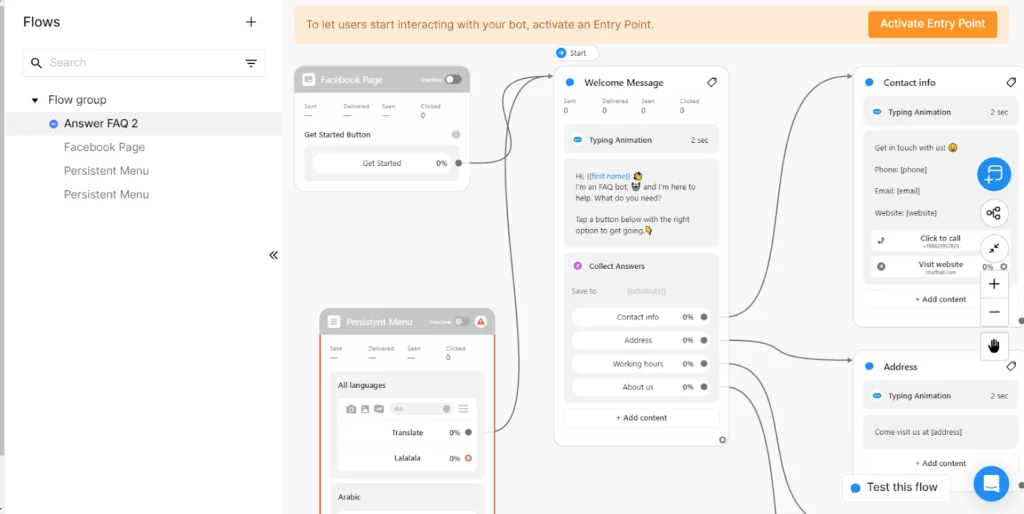
10. OKR Tracking
OKR (Objectives and Key Results) tracking offers potential for SaaS startups, focusing on team collaboration and transparent alignment with company goals. Timely, for instance, utilizes AI to build and track OKRs. Timely automates time tracking in work applications, making progress toward goals visible and measurable. Timely’s innovative SaaS product idea has raised $1 million through seed investment.
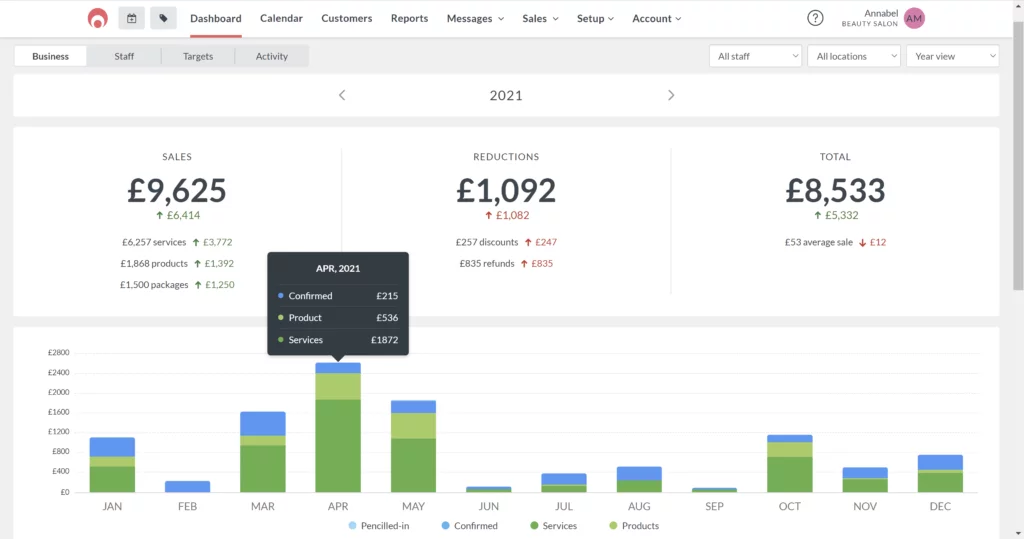
11. CRM for Freelancers and Enterprises
CRM solutions are critical for managing communication with clients and prospects throughout the customer lifecycle. The CRM market is projected to reach $120.30 billion by 2027, presenting substantial revenue potential. An example in this space is Sendinblue, a cloud-based digital marketing platform that offers CRM and marketing automation services, empowering freelancers and enterprises to connect with clients through various channels and providing AI-based analytics to track progress.
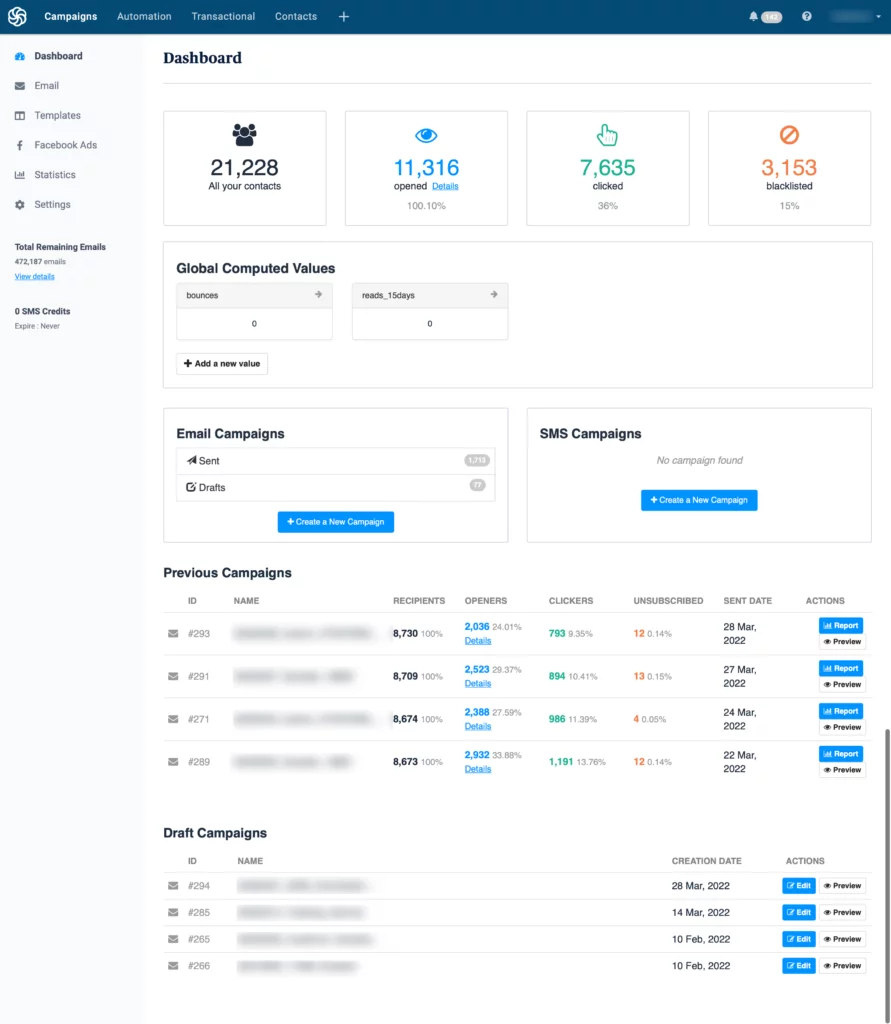
12. Accounting and Financial Transactions
The development of SaaS accounting software continues to be a lucrative field, with a high demand for fintech startup ideas. These applications are designed to record, process, and report financial transactions for individuals and businesses, offering features such as inventory management, tax handling, payroll systems, financial reporting, and analytics. Top startup ideas in accounting software efficiently track and organize financial data, providing users with a comprehensive view of their finances.
A notable example in this field is Daxko, a SaaS-based company specializing in operations and financial management solutions. Daxko’s accounting product, stemming from an innovative SaaS application idea, has secured a total of $8.3 million in funding.
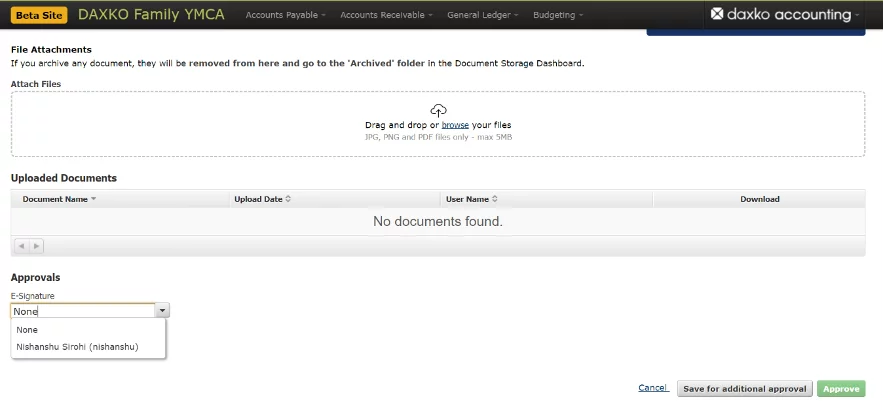
13. CV Generator
Creating a professional resume from scratch can be a daunting task for many individuals. Therefore, CV generators that assist users in creating and formatting resumes are highly sought after and present a profitable SaaS business idea. These services enable real-time resume creation, offer options for printing or digital sharing, and provide pre-designed templates. One prominent online resume-building software is Novoresume, which offers user-friendly templates for CV creation, along with a wide range of fonts and video tutorials.
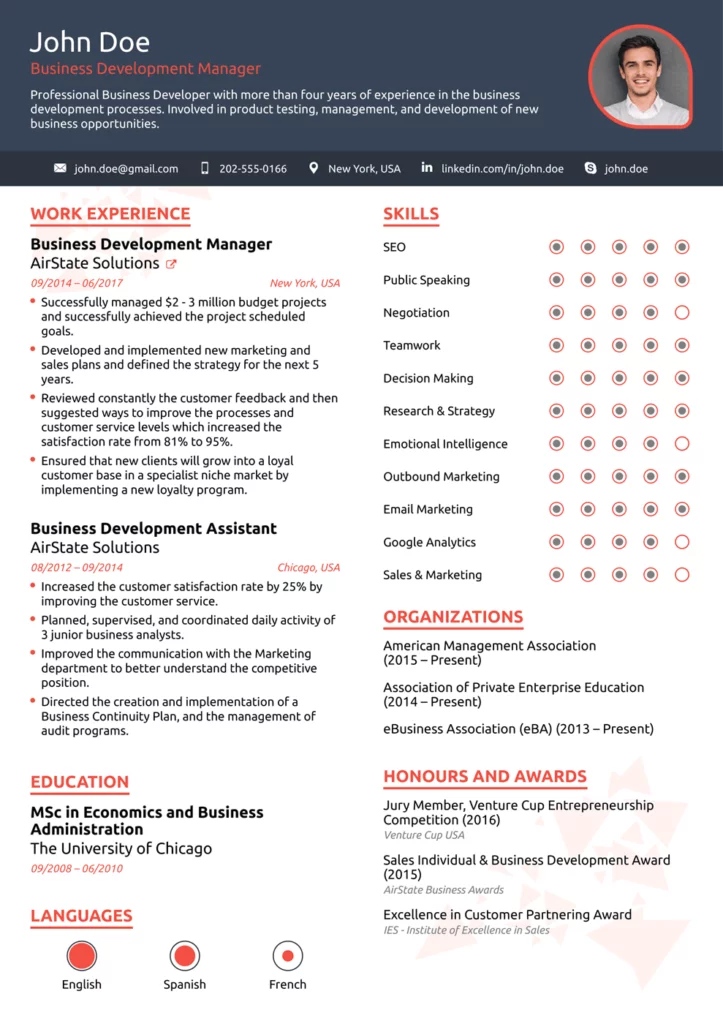
14. Travel Route Optimization
Planning travel routes, especially for long distances and unfamiliar locations, can be a daunting task. Route planning software that utilizes advanced algorithms to determine the most efficient and optimized routes is invaluable for companies relying on logistics, field services, or travel planning. Focusing on this SaaS idea in 2023 can yield significant benefits.
An excellent illustration of this concept is RouteXL, a cloud-based trip planning SaaS platform that efficiently organizes waypoints, identifying the best roads and stops along the journey.
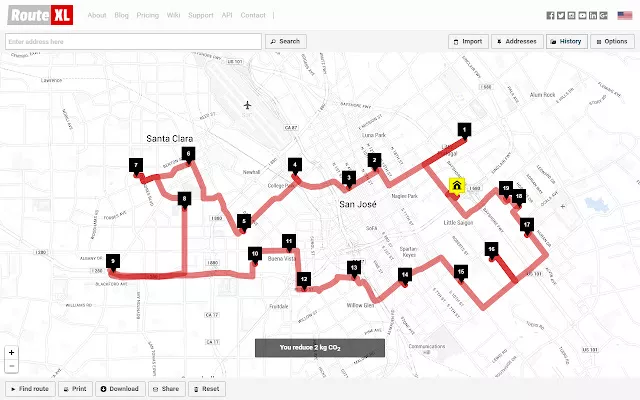
15. Secure Password Management
With an average of around 35 applications installed on the average mobile device, the challenge of managing multiple login credentials has grown. To address this, innovative SaaS solutions offer secure password storage. Password managers enable users to create and remember unique passwords for each account, enhancing security. An example is Bitwarden, which securely stores passwords and personal information, making online experiences safer and more accessible.
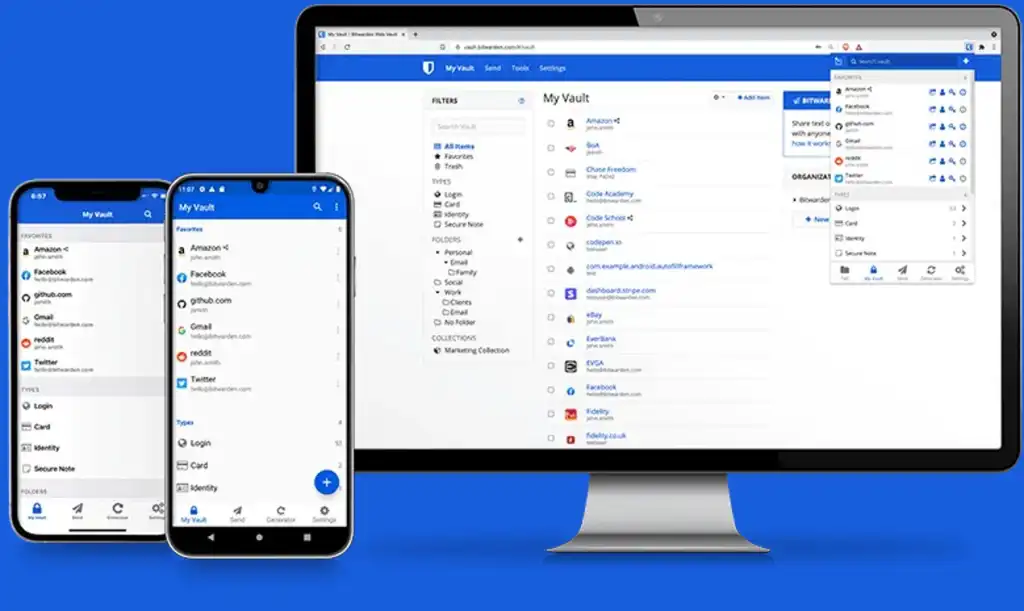
Conclusion:
By harnessing the forces of value, convenience, and efficiency, a meticulously crafted SaaS product emerges as a magnet for customers, a source of revenue generation, and a catalyst for swift scalability. Within the ever-changing SaaS landscape, the perfect fusion of innovation, market demand, and strategic acumen empowers entrepreneurs to unlock the latent potential of this dynamic industry, creating victorious enterprises that make an enduring impact.
Much like a chameleon in a constantly shifting landscape, aspiring SaaS entrepreneurs should wholeheartedly embrace adaptability, eagerly seek insights from user feedback, and fearlessly shape their ideas to align with the ever-evolving contours of user requirements and market dynamics. Armed with unwavering commitment, relentless determination, and an unswerving focus on customer satisfaction, the realm of possibilities for SaaS business concepts unfurls limitlessly, akin to an unending symphony awaiting its composition.
FAQs on SaaS Ideas:
How to Generate Business Ideas for a SaaS Product?
Coming up with successful business ideas for SaaS products involves solving the problems of your target audience. To begin, familiarize yourself with the industry you are interested in and identify the pain points that potential users are facing. Engage in forums, social media platforms, and online communities to connect with your future users and gain insights into their real needs.
How to Generate More Ideas in the SaaS Industry?
To generate more profitable ideas in the SaaS industry, immerse yourself in the domain and stay updated on the latest trends. Pay attention to the areas that align with your expertise and look for opportunities to address existing challenges. Engage in thorough research by exploring dedicated forums, blogs, industry publications, and social media platforms to gain a comprehensive understanding of the market and identify untapped opportunities.
How to Establish a SaaS Project?
Launching a successful SaaS project requires careful planning and execution. Start by conducting market research to validate your idea and assess its viability. Develop a lean plan that outlines your target audience, value proposition, and business model. Determine the development approach that best suits your project, whether it’s building in-house or partnering with a development team. Create a prototype to demonstrate your product’s functionality and usability. Secure the necessary funding, whether through self-funding, investors, or grants. Finally, launch a minimum viable product (MVP) to gather user feedback, iterate, and continuously improve your offering.
What Sets KPI and OKR Apart?
OKR (Objectives and Key Results) aids in establishing strategic goals and outlining the means to achieve them. On the other hand, KPI (Key Performance Indicator) provides a metric to monitor performance, measure success, and identify areas where deviations from the plan may occur.



